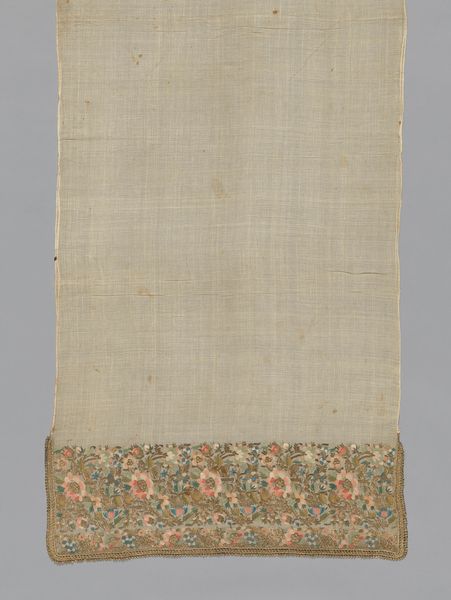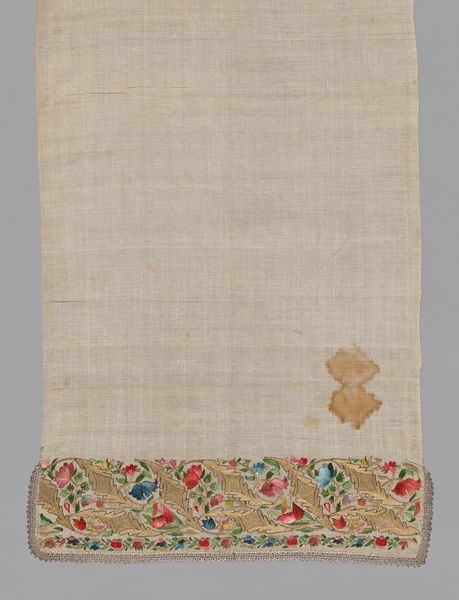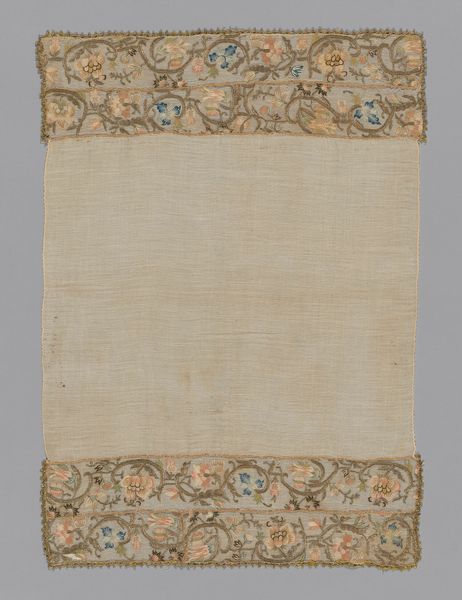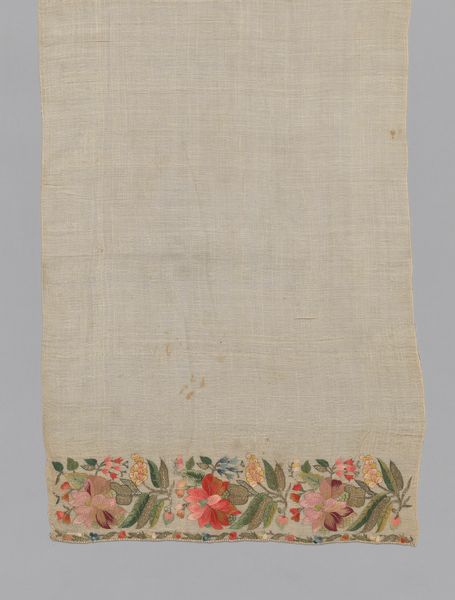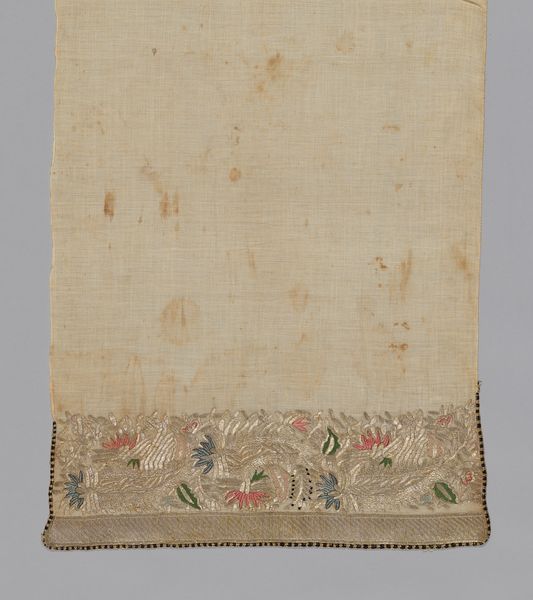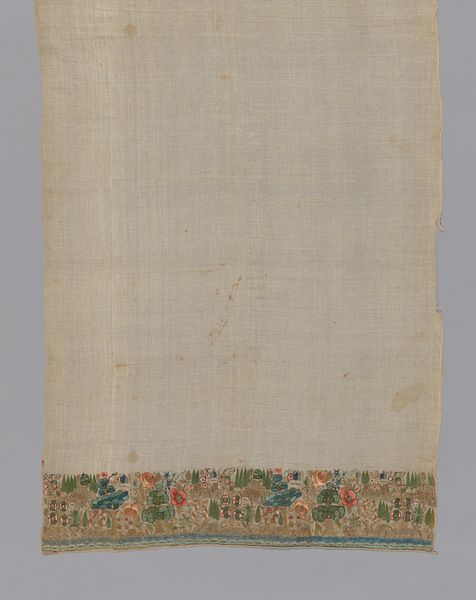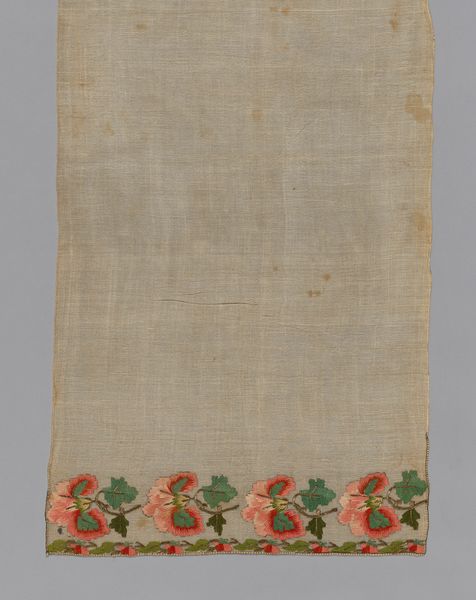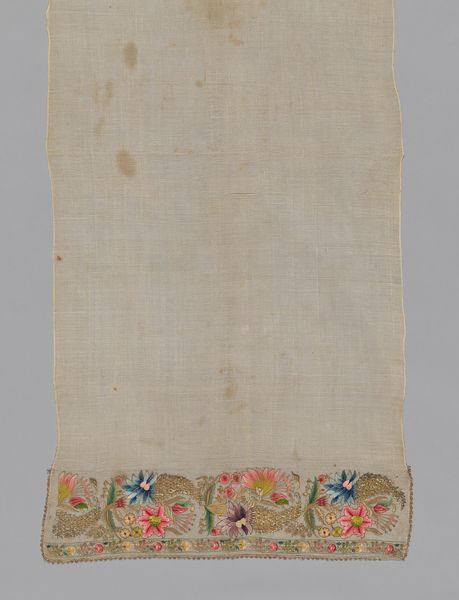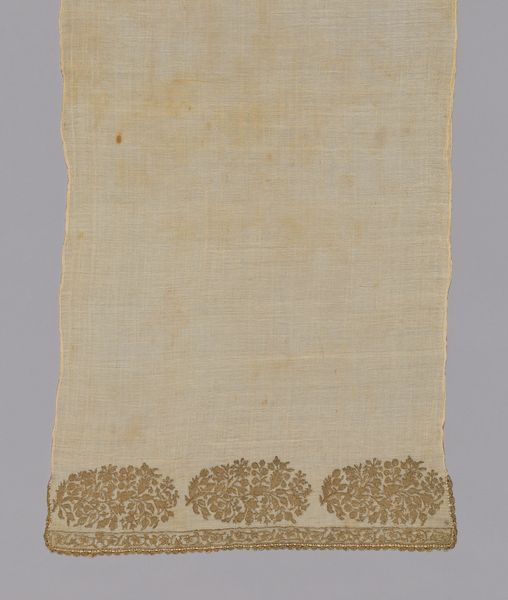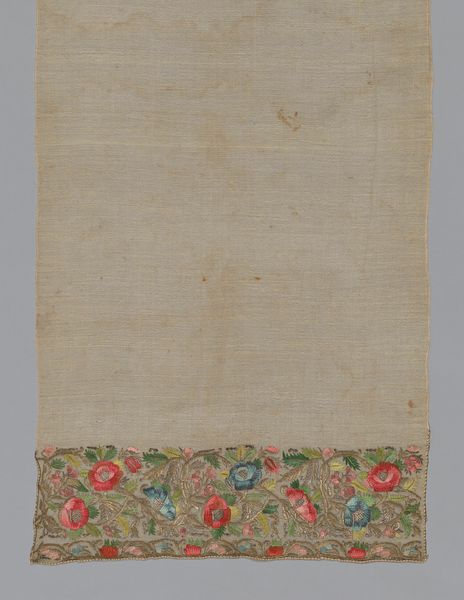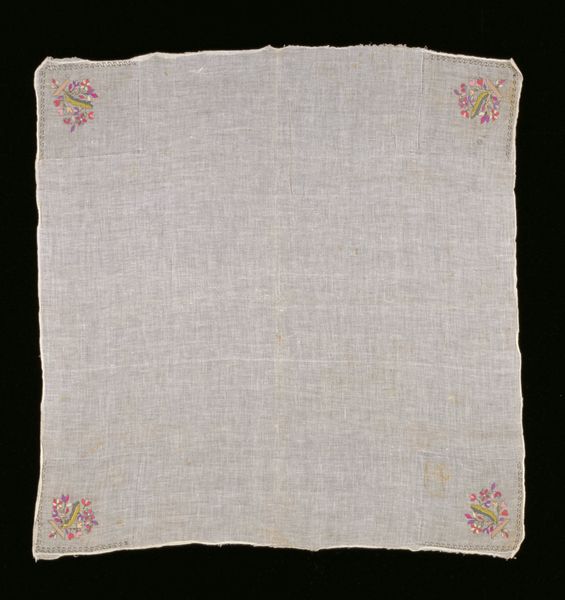
fibre-art, weaving, textile
#
fibre-art
#
weaving
#
textile
#
decorative-art
Dimensions: 139.7 × 70.5 cm (55 × 27 3/4 in.)
Copyright: Public Domain
Curator: This object, entitled "Towel or Napkin," dates back to the 19th century and resides here at the Art Institute of Chicago. Its anonymous maker crafted it using textile weaving and fibre art techniques. Editor: It's... understated. The floral embroidery along the bottom hem adds a delicate touch, but mostly I'm struck by its potential utility. I imagine it gracing a well-worn table. Curator: Right, its practicality. When we think about textiles from this period, we often neglect to consider the sheer labor involved in producing even seemingly simple items. Cultivating flax or cotton, spinning the thread, weaving the fabric – each stage demanding considerable effort. Who had access to the tools, time and training necessary? Editor: Precisely. Everyday objects like this offer fascinating insights into social hierarchies and divisions of labor. Was this handmade within a wealthy household, perhaps an activity for women with leisure? Or by workers laboring under less desirable circumstances? Understanding who made this helps reveal power dynamics related to class, gender, and skill. Curator: Exactly. The type of fibre used would also determine much about who the makers and users of this functional artwork would have been. It would have affected its feel, washing durability and drying capabilities and how it functioned. The specific weaving style has important details too. How was it dyed? Was this for personal use? Or for commercial trading and use? These questions of materiality provide avenues into thinking about wider networks of production and distribution. Editor: It also seems like an artifact burdened with cultural narratives about domesticity and femininity. Throughout the 19th century, the creation and maintenance of household textiles were inextricably linked with notions of feminine virtue and the home. Thinking about how labor intersects with ideas about womanhood in that era really contextualizes this seemingly "simple" object. Curator: Looking more closely, one can note areas of repair and patching. How did people deal with mending these items in this period? Were these woven into the fabric itself? Were visible alterations something of an act of creativity and care, rather than being considered something unrefined? Editor: I’m left wondering about all those unknown hands involved and reflecting on how historical shifts redefine gender roles, craft, and access. Curator: A great summary. Through attention to materials and techniques, it enables us to imagine how art making was connected to lives then, and the object's continued presence might echo with lives today.
Comments
No comments
Be the first to comment and join the conversation on the ultimate creative platform.

